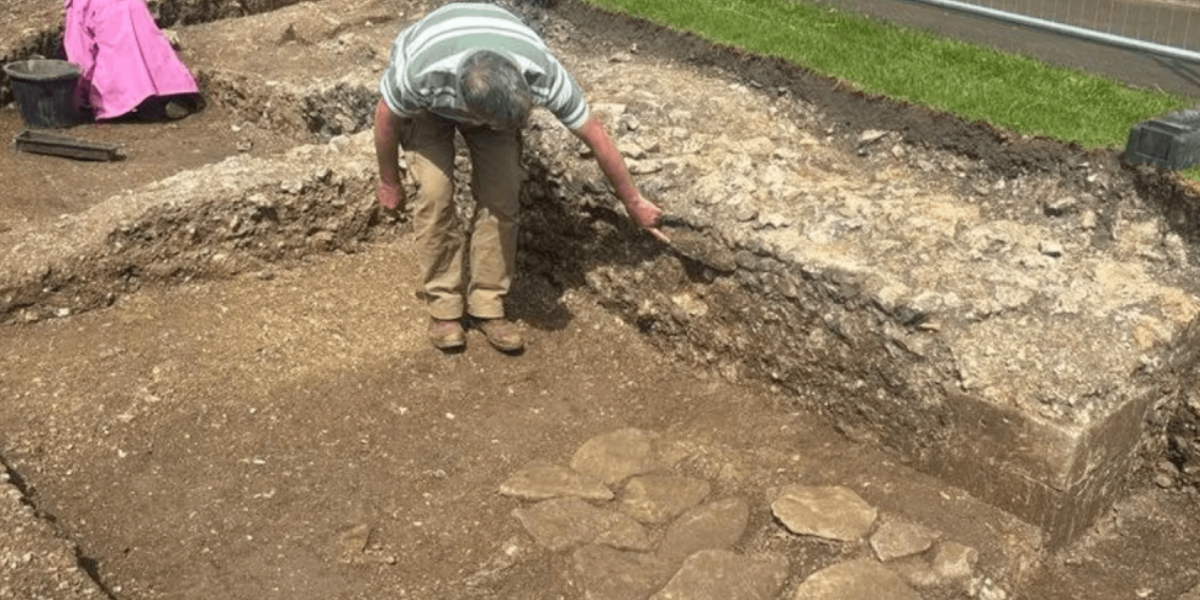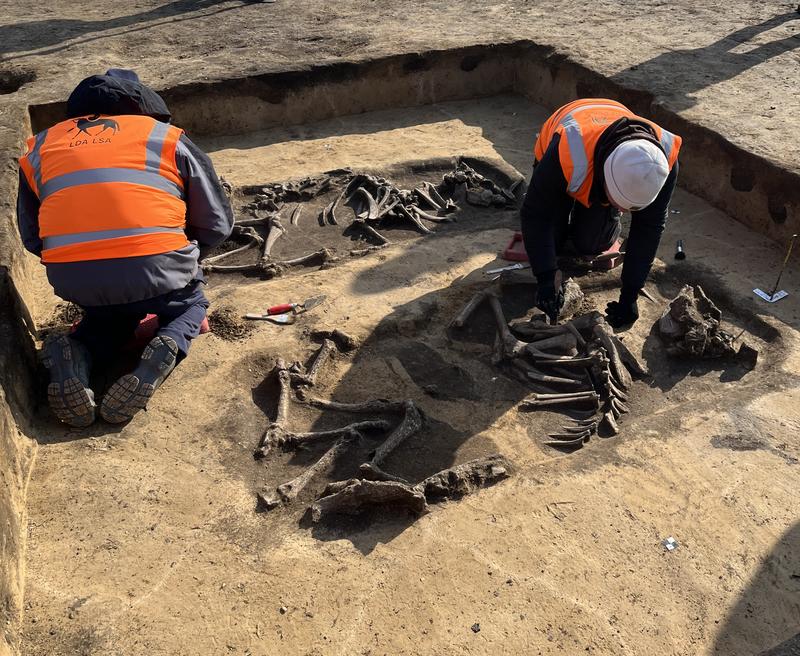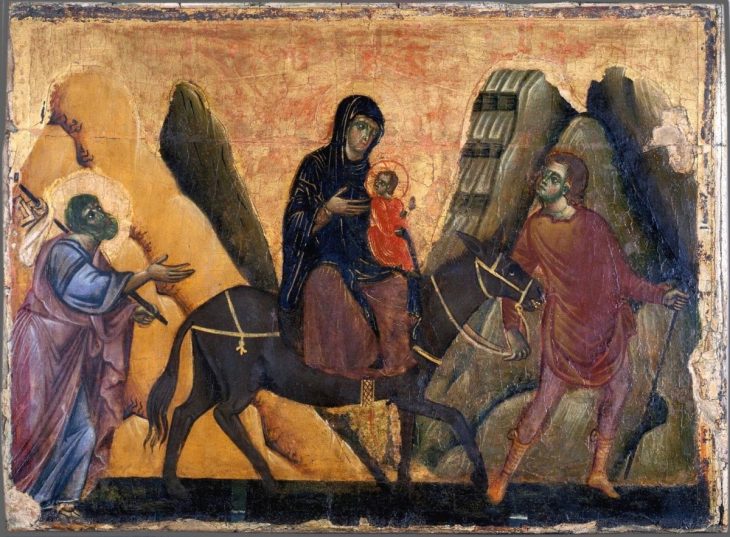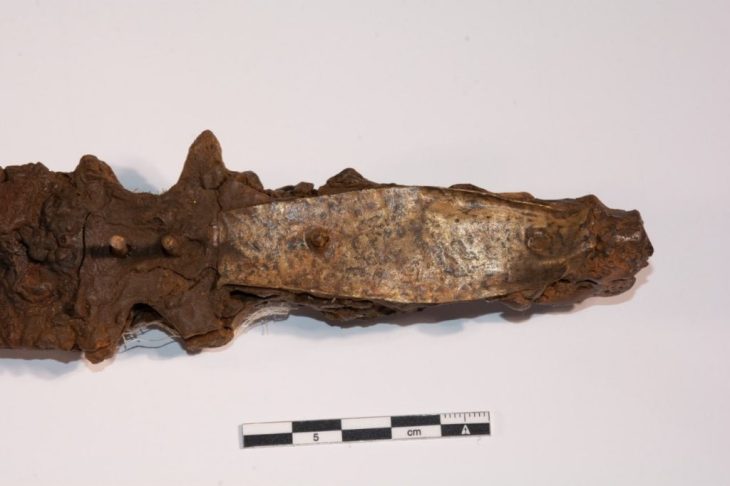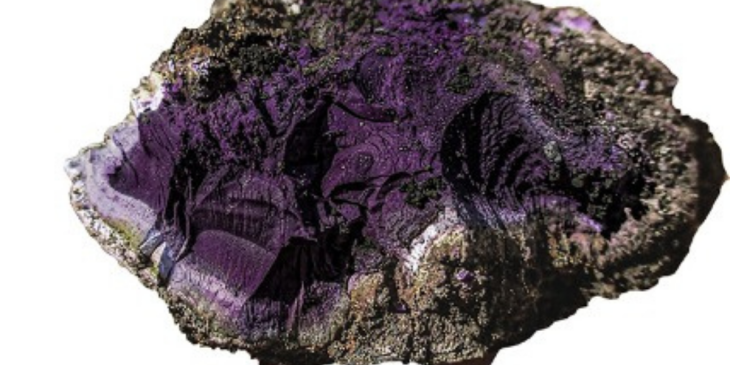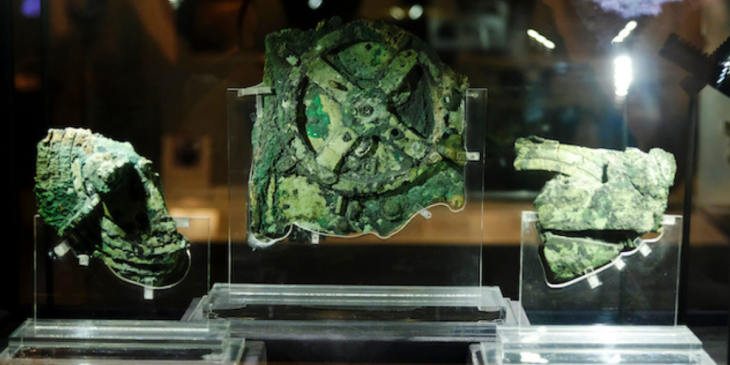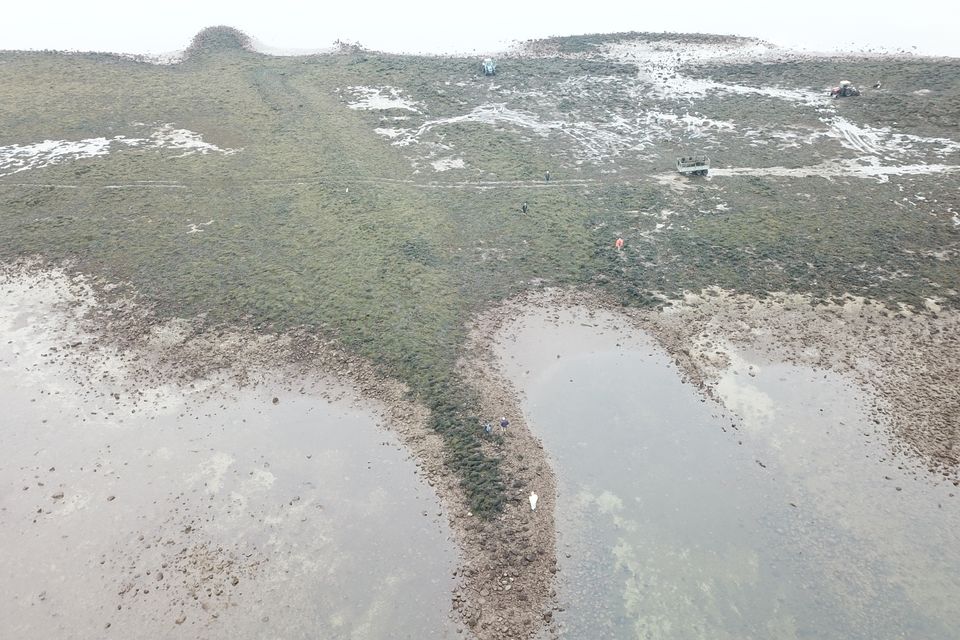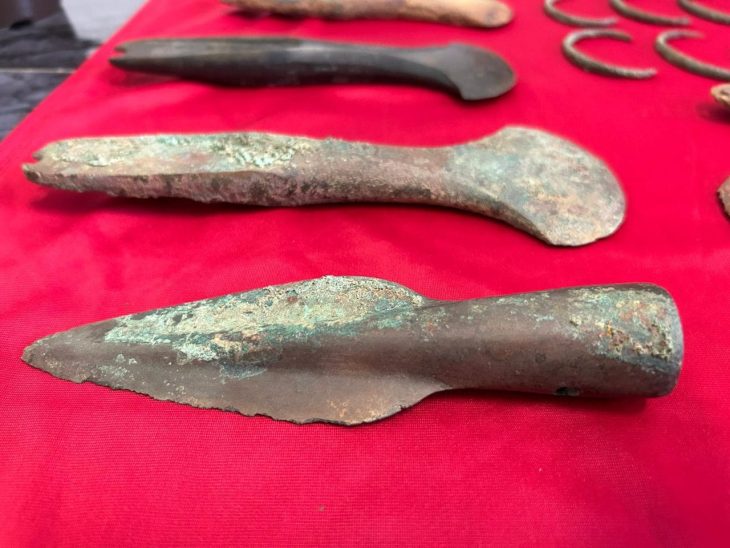The remains of a military causeway or bridge leading to an 11th-century Norman castle were found during excavations at Chichester’s Priory Park in West Sussex, England.
The excavation team is led by Chichester District Council’s archaeologist James Kenny and includes archaeologists from Chichester and District Archaeological Society.
Chichester’s Priory Park Excavations have reached their seventh season. Last year’s excavation revealed the remains of a ditch and the foundations of a building that was part of a medieval Franciscan monastery.
Other discoveries include fragments of decorative floor tiles and roofing materials from the late medieval period and other floor tile remains believed to date to the Tudor period.

“We are continuing the work we did last year, focusing on the Norman history of the park and we have been lucky enough to uncover the structure of a bridge that will span the ditch or ‘motte’ that surrounds the central mound,” said James Kenny, Chichester District Council’s archaeologist.
“This is an exciting discovery because for the first time since the Middle Ages people were able to see what would have been a very impressive military defense system.”
The archaeologists’ work this year has been informed by a series of geophysical and ground-penetrating radar scans.
“As part of the excavation, we found key architecture that would have formed the structure of the bridge, including a solid corner block or ‘quoin’ made of limestone that would have been imported for this purpose. We also discovered putlog holes – holes into which oak beams would have been inserted to help create a scaffolding system that would have been used to build the structure. The level of the putlog holes suggests that the ground level at the time would have been at least six feet lower, but could have been much deeper.”

Other discoveries include fragments of decorative floor tiles from the late medieval period and roofing materials and other floor tile remains believed to be from the Tudor period. Photo: Chichester District Council
“The structure is extremely impressive and solidly built. Norman soldiers used this bridge as a means to protect the castle of the city. They would cross the bridge on wooden beams on the wall – on foot, on horseback or in carts – and then remove the beams after use so that invaders could not cross to the motte. Our finds suggest that the bridge may have been built in stages as the Normans settled and the castle was used more permanently,” Mr. Kenny continued.
Motte and bailey castle was probably built by Earl Roger Montgomery soon after the Norman Invasion in 1067 or 1068. He was one of the most influential Norman barons, controlling much of West Sussex.
Cover Photo: Chichester District Council

